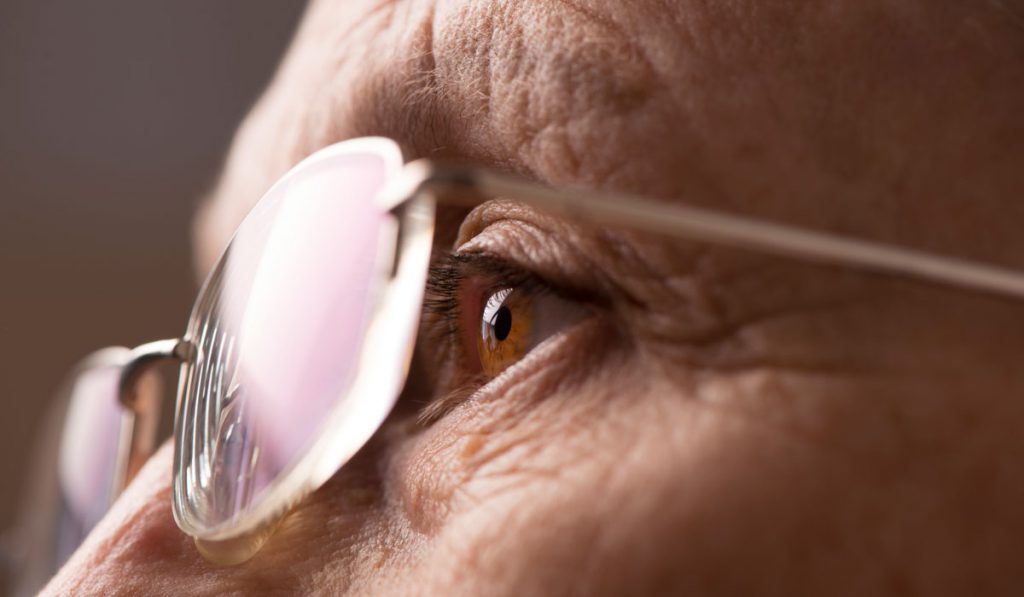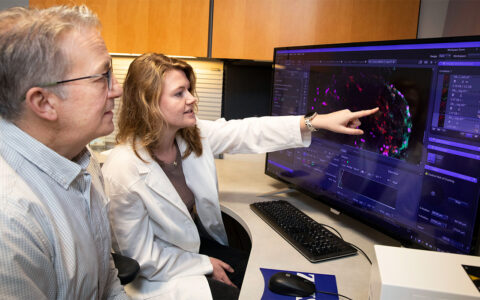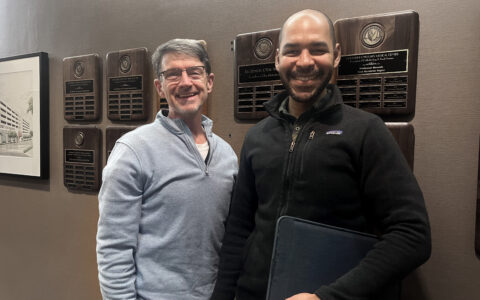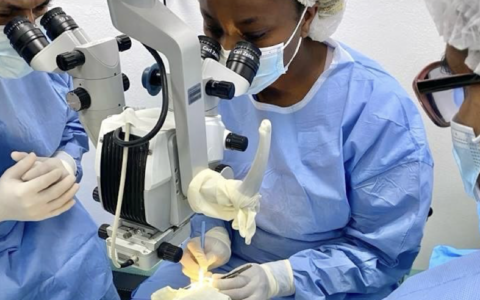The number of individuals in the U.S. affected by low vision is expected to grow to five million by 2030 and nine million by 2050. While these numbers may reflect an aging population—with degenerative diseases like glaucoma, diabetic retinopathy and macular degeneration being major contributors—low vision also impacts a significant number of children and teens.
After experiencing growing demand for low vision services, the Vanderbilt Eye Institute established a dedicated clinic in fall of 2018. “There was an outstanding need within the community for a comprehensive, multidisciplinary service like this,” said Josh Robinson, O.D., instructor in the Department of Ophthalmology and Visual Sciences and director of the new clinic at Vanderbilt University Medical Center.
Patients at the clinic are provided with a personalized low vision rehabilitation plan that can include custom lenses or adaptive technology. Occupational therapists come to the clinic one day a week to work with patients individually. The plan may also include social work and counseling referrals, as well as specialists trained in orientation and mobility and vocational rehabilitation.
“We are able to provide much needed continuum of care and follow-through. The focus is on patients maintaining their identity and quality of life,” Robinson said.
A Diverse Patient Population
When Robinson—who completed residency training in low vision rehabilitation—joined Vanderbilt, he faced a nearly 10-month backlog of low vision cases. Today his daily clinic sees more than 25 new patients a week from not only Tennessee but also Kentucky, Alabama, Georgia, Virginia, Mississippi, North Carolina and South Carolina.
“Inherited retinal conditions… impact their ability to attend school, drive, get into college and be independent.”
Although geriatric patients make up most of the clinic’s patient volume, Robinson treats a robust pediatric population as well. “I begin seeing patients starting in kindergarten,” he said. “There are a lot of young children and teens with inherited retinal conditions that impact their ability to attend school, drive, get into college and be independent. For many families our clinic can potentially mean keeping the door open for their child.”
Some of Robinson’s adult patients have lost hope of ever functioning normally or are fearful because their vision has changed. “Patients often come to me after being told there is nothing more that can be done,” he explained. “For my adult patients, it could mean maintaining a level of employment and independence, while my retired patients may be able to read a menu, the Bible, or watch TV.”
Expanding Care, New Research
One of the biggest hurdles in low vision care is coverage of the prescription devices, said Robinson, which places a large burden on patients for out-of-pocket expenses. The clinic receives funding to assist patients who meet financial criteria and is continuing to seek new funding sources to meet the growing need.
And the technology is getting more affordable. While the foundation of low vision care has always been optical devices, technology has been a game changer. “With a mobile device in their hands, patients now have access to voice recognition, magnification, GPS and many other apps developed to make their lives easier,” Robinson said. “We teach them how to take advantage of these tools.”
Robinson has begun to implement the clinical research arm of his practice. Working with Vanderbilt Eye Institute investigators and other collaborators, he hopes to study areas that offer better outcomes and treatment, including early intervention, low vision rehabilitative strategies like head-mounted optical devices, and outreach-related approaches such as advocating for more progressive driving laws.
“I chose this field because of the impact prescriptive devices and support can provide. I was exposed to this subspecialty as a student, and I saw the impact these services had on patients and their quality of life.”




